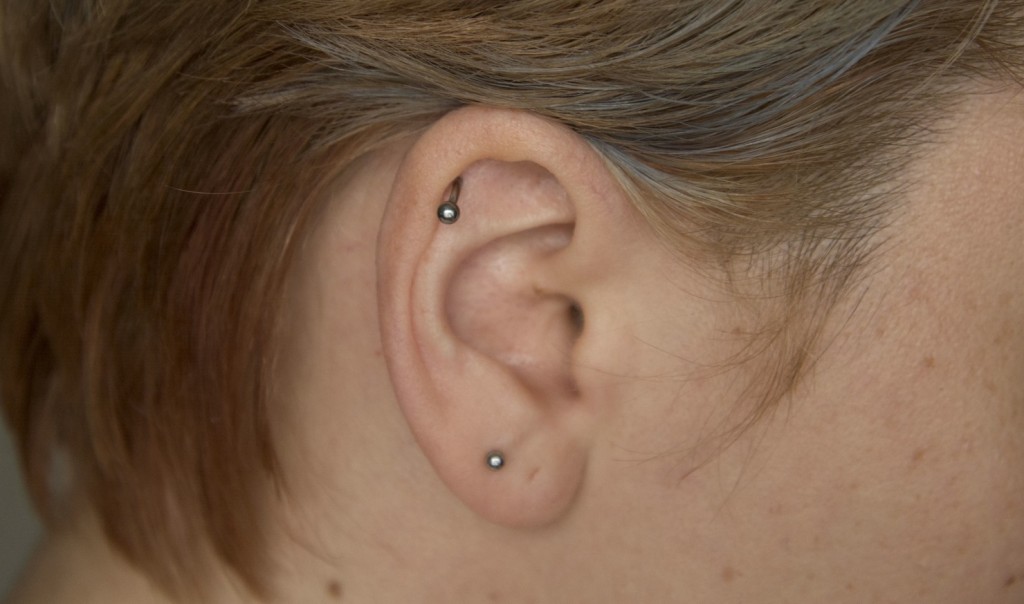 Ear piercing is nothing new and has been around for a long, long time. In fact, the practice is at least 5,000 years old. We know this because of the discovery of Otzi the Iceman’s mummified remains. Otzi the Iceman lived around 3000 BC in the snowy Alps and died in the mountains, where his remains were discovered. His body was found to have been adorned with primitive tattoos – a strange design of dots and dashes, and lo and behold, his earlobes had been pierced!
Ear piercing is nothing new and has been around for a long, long time. In fact, the practice is at least 5,000 years old. We know this because of the discovery of Otzi the Iceman’s mummified remains. Otzi the Iceman lived around 3000 BC in the snowy Alps and died in the mountains, where his remains were discovered. His body was found to have been adorned with primitive tattoos – a strange design of dots and dashes, and lo and behold, his earlobes had been pierced!
Today, ear and other piercings have become very popular, not only with men and women, but also with children. But is it OK to have children’s ears pierced? Is there such a thing as a ‘good age’ to have your little one’s ears pierced?
When?
Many parents choose to have their baby’s ears pierced, reasoning that it’s better to get it over and done with sooner than later. However, a word of caution is advised. New-born babies have very small earlobes and the possibility of misplaced piercings and painful infections are naturally higher. Parents should also bear in mind that an infant’s immune system is still developing, so by creating an open wound (which is what an ear piercing does) leaves the door open to infections. The advice of many paediatricians is for parents to wait until a child is at least 12 months old.
Beyond that, there is no ‘best’ age for ear piercings and parents are advised to use common sense. Whether you decide to do it while your child is younger, or wait until your daughter or son is old enough to make their own decision, it’s up to your own style of parenting.
Where?
Where you get your child’s ears pierced is a very important decision, but whatever you do, be discerning about your choice of establishment. The tattoo parlour down the local high street may not be the right venue, and a shopping centre venue may be lacking in expertise.
Training and scrupulous hygiene are key. Use a professional piercing studio or jeweller’s where the piercing will be performed in a dedicated room, so that the process is safe, clean and sterile.
The technician will thoroughly wash their hands before putting on gloves to perform the piercing. They’ll then clean the area to be punctured and use an unopened ear piercing needle to do the job. Research reveals that using a needle, rather than a piercing gun, is a much more effective method of piercing with less chance of infection.
Under no circumstances should you attempt to do an ear piercing at home.
Pain Relief
There will always be a little bit of discomfort associated with a piercing, but it is usually short lived and quite bearable. If necessary, ice wrapped in a cloth and gently applied to the area of the piercing can help reduce the pain. Your piercing technician may also give you a topical local anaesthetic to numb the area.
Which materials
Surgical stainless steel earrings are the most appropriate choice for new piercings, as this metal is least likely to cause an allergic reaction. You might want to avoid cobalt and nickel as allergies to these metals are common. Many people are also allergic to silver.
Safe precious metal options, which you can find at professional jewellery retailers, include titanium, platinum and 14 carat gold. To allow pierced ears to heal completely and be pain free, it’s advisable to wear the first earrings for around six weeks or so.
Post-piercing care
It’s vital to keep your child’s ears and the earrings clean. You should carefully wash the pierced area of both ears with cotton wool dipped in either alcohol or hydrogen peroxide. Gently turn and slide the earrings around to keep the shape of the holes.
The first earrings should not be removed and replaced with new earrings until the healing is complete, otherwise the holes could close up. Keep a lookout for any signs of infection and avoid using shampoo or shower gel near the ears and earrings.
Finally, it’s advisable to avoid going swimming until the piercing has completely healed. Public swimming pools, the sea and lakes are not the cleanest of environments. Bacteria thrive here and can easily infect an open wound
Learn more
There is a myth that getting a tattoo is risky on your skin. To tell the truth, such things are told and believed only by those people who don ...
A large number of people can often reach a point within their career where it starts to stagnate slightly and they start to think about new career ...
Rocking your baby to sleep might be the easiest way to ensure that your baby is calm and not crying anymore. And, getting a baby to sleep with roc ...
Although it would be excellent if everyone experienced a happy childhood, that is not the case. Families do split from time to time in real life. ...
While women would love to step out for a manicure and pedicure often, that’s not always possible. Professional and personal commitments can redu ...







